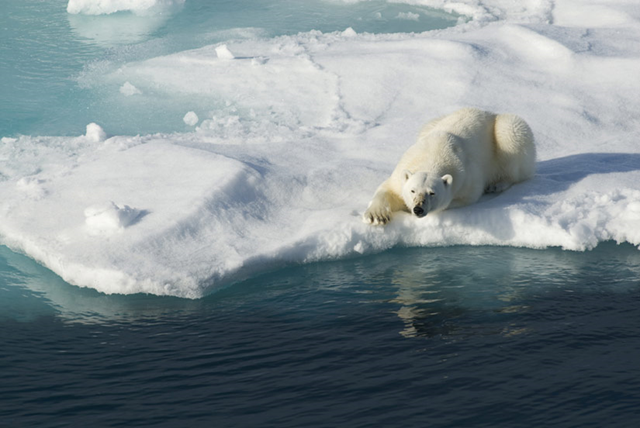The polar bear’s last stand
A final refuge of Arctic summer sea ice may be the last outpost for polar bears. 
By Jessica Marshall
Thu Dec 16, 2010 04:05 PM ET
- As sea ice disappears, a refuge of suitable habitat for polar bears and ringed seals — key polar bear prey — may persist in northeastern Canada and northern Greenland.
- The refuge will be supplied by ice from throughout the Arctic — a far more diverse source than this region experienced in the past.
- A more interconnected Arctic means that pollutants and nutrients from other regions could affect the refuge.
Although Arctic sea ice is projected to be all but gone by the end of the century, research suggests that a final refuge of Arctic summer sea ice will persist along northern Canada and Greenland. These areas may provide the last outpost for polar bears and the ringed seals of the Arctic that the bears feed on. The fact that the remaining sea ice will likely be found in a patch, rather than scattered throughout the Arctic, makes it more likely to form a viable habitat, said Stephanie Pfirman of Barnard College and the Lamont-Doherty Earth Observatory in New York, who presented some of the work today at a meeting of the American Geophysical Union in San Francisco. But as Arctic waters become more open and ice moves more freely, the area could be vulnerable to threats from increased shipping, oil exploration or other migrating pollution, researchers report. Pfirman and colleagues based their predictions on model projections of sea ice through the end of the century and on sea ice measurements showing that the oldest and thickest sea ice in the Arctic occurs in the projected refuge area, suggesting favorable conditions where sea ice could persist. Polar bears rely on sea ice to hunt seals in the fall and spring, ambushing ringed seals near the breathing holes the seals maintain in the ice. Meanwhile, the seals need not only sea ice as a platform for molting and giving birth to their young, but also sufficiently deep snow drifts to build snow caves that insulate their pups from extreme cold in spring and protect them from predators like the polar bear. Brendan Kelly of the National Oceanic and Atmospheric Association’s National Marine Mammal Laboratory in Juneau, Alaska, used models to project the snow cover over the Arctic through the end of the century to determine where sufficient snow was likely to persist for ringed seal pup survival. Although his work suggests snowfall may increase in the Arctic in the future, ice will form later in autumn when the most snow falls, meaning the snow will drop into the open ocean and melt. “The conditions will be inadequate. There will be insufficient snow depth before the end of the century on the ice in April over most of the Arctic Ocean. The one apparent exception is in northern Canada and northwest Greenland,” Kelly told Discovery News. …